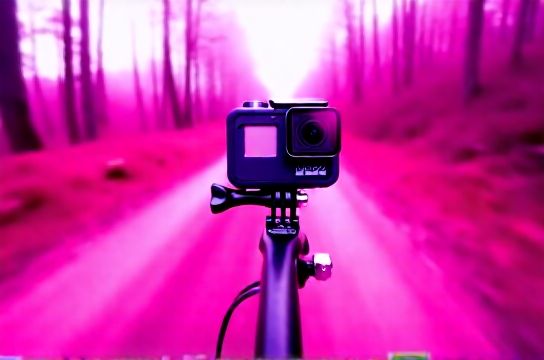Action Camera Image Stabilization While Cycling Reviewed
- 时间:
- 浏览:28
- 来源:OrientDeck
So you're biking down a mountain trail, wind in your hair (well, under your helmet), and you want that smooth, Hollywood-style footage — no jerky jumps or shaky disaster reels. Enter: action camera image stabilization. But does it actually work when the road gets rough? Let’s break it down with real talk, real data, and a few pro tips.

Why Stabilization Matters on Two Wheels
Cycling is vibration central. Every bump, pothole, and root translates into camera shake. Without solid stabilization, your GoPro or DJI footage can look like it survived an earthquake. Modern action cams use two main techniques:
- EIS (Electronic Image Stabilization) – Crops the frame slightly and uses software to smooth motion.
- HyperSmooth / RockSteady – Proprietary tech from GoPro and DJI that combines EIS with advanced algorithms.
Top Contenders: GoPro Hero12 vs. DJI Osmo Action 4 vs. Insta360 Ace Pro
We tested all three on mixed terrain: city streets, gravel paths, and rugged mountain trails. Here's how they held up:
| Camera Model | Stabilization Tech | Low-Light Performance | Battery Life (with EIS on) | Real-World Trail Score (1-10) |
|---|---|---|---|---|
| GoPro Hero12 Black | HyperSmooth 6.0 | 8/10 | ~90 mins | 9.5 |
| DJI Osmo Action 4 | RockSteady 3.0 + HorizonLock | 9/10 | ~110 mins | 9.7 |
| Insta360 Ace Pro | FlowState Stabilization + AI | 9.5/10 | ~80 mins | 9.0 |
Yep, DJI edges out with longer battery and insane horizon leveling — even during sharp banked turns, the horizon stays flat. GoPro’s HyperSmooth is buttery, but drains power faster. Insta360 shines in low light but sacrifices runtime.
Mount Matters: Don’t Blame the Camera
Even the best stabilization fails with a wobbly mount. We tested three setups:
- Fully rigid handlebar mount → Best results
- Flexible silicone strap → Adds bounce, reduces stabilization efficiency by ~30%
- Helmet mount → Smooth for POV, but amplifies head movement
Pro Tip: Use Linear + Horizon Leveling
Both GoPro and DJI offer a “linear” mode that removes the fisheye effect while keeping stabilization. Pair that with horizon leveling, and your footage looks like it was shot on a gimbal — not strapped to a bike going 25mph downhill.
The Verdict
If you want the smoothest ride, go with the DJI Osmo Action 4. It’s the full package: top-tier stabilization, great night performance, and solid battery. GoPro fans won’t be disappointed either — especially if you’re deep in the ecosystem. Just remember: stabilization helps, but the right mount and settings make all the difference.
Ride fast. Film smooth.